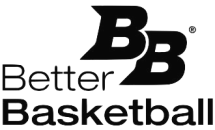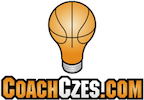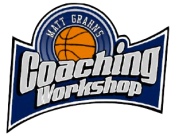Tips to Become a GREAT Shooter
As I have mentioned, I was fortunate to watch Dave Hopla last week at the Billy Donovan Basketball Camp. The first time I saw Hopla speak was at the Gary Williams Basketball Camp back in 2005 and was so mesmerized that he rarely misses a shot that I failed to take in most of his teaching points. The second time around I wasn’t going to let this time go to waste. Not only does he do a PHENOMENAL job teaching better terminology and techniques to become a better shooter, but he also interacts with the campers in a manner that is comical and engaging.
Hopla’s formula is very simple, do the same thing every time, and over time you will create the muscle memory to become an elite shooter. Yes this sounds simple, but it takes an immense amount of practice; one thing many kids today do not do because of the surge of video games and social media. Toward the beginning of his lecture, he did a great job grabbing the attention of the campers. Hopla asks, “How many of you shoot EVERYDAY?” Of course, several kids raised their hands and he picked one out of the crowd to come up. The dialogue then went something along these lines:
Hopla: So you shoot everyday of the year?
Camper: Yes.
Hopla then grabs his planner out of his bag and started going through his calender.
Hopla: So you said you shot everyday in the past year, did you shoot on April 31?
Camper: Yes
Holpa: (Laughingly) That’s impossible, there are only 30 days in April!!
Hopla: Ok I will give you another chance, did you shoot on my birthday?
Camper: I don’t know, when is your birthday?
Hopla: (Laughingly) It doesn’t matter when it is, if you shot everyday you shot on my birthday!!
As we all know, kids love laughing at other kids so if making his first 100 shots didn’t get their attention, this sure did.
Hopla started off his lecture right in front of the rim working on form shooting with only his shooting hand. He continued to shoot with only his shooting hand all the way back behind the 3-point line. One shot after another, swish…swish…swish. While shooting he discussed his teaching points of proper technique. Note: If the shooter starts to miss consecutive shots and loses proper form, take a step closer to the rim until you feel comfortable again.
One of the techniques he emphasizes is that anyone can be a good shooter and make shots; but it takes a GREAT shooter to try and swish every shot. A great visual aid he gave was to imagine that there are eggs sitting on the rim and you do not want to break any of the eggs.
Note: I am sure most of you have heard these in some combination but I thought his explanations were great for the kids.
Shooting Terminology & Technique
1. Toes to the Target: In addition to pointing your body in the same direction of the rim/goal/backboard about shoulders width apart, the prominent toe (Right for Right-handed shooter/Left for Left-handed shooter) should be slightly more forward. LA Clippters Asst. Coach Kevin Eastman a similar terminology, “10 Toes to the Rim”.
2. Wrist/Wrinkles: Cocking your wrist as far back as possible will create wrinkles on the back of the wrist. These are necessity in order to put the proper backspin on the basketball upon your release. Placing backspin on your shot makes it a “softer” shot; meaning if it hits the rim it is more likely to bounce in than fly off the rim.
3. “L”: The Humerus and the Radius/Ulna should form an “L” with your shooting arm. This ensures that you start the ball in the correct position in order to put the proper arc on your shot. Additionally, you want to make sure the “L” is tucked in close to your body and not flying out like a chicken wing.
4. Pads & Panels: The basketball should never touch the palm of your shooting hand. It should rest softly on the pads of your hand and fingertips. You should be able to see daylight under the ball if you look straight through the space between your thumb and index finger. Additionally, your shooting hand should be centered on the panels of the basketball.
5. Knees Bent: The farther you become from your target, the more legs you need to incorporate into your shot.
6. Elbow Above Ear: On the release of the ball, as you flick your wrist and follow through your elbow should finish above your ear.
7. Freeze the Follow Through: Once the ball has left your shooting hand, freeze your follow through until the ball reaches the target. The analogy he gave was to imagine you are putting your shooting hand down into the center of the rim. Another correlation my dad always used was imagine you are trying to reach into the cookie jar on top of the refrigerator.
8. Balance: Many coaches preach to land in the same exact spot in which you left the floor after a jumpshot. However, this is impossible in order to become a great shooter. The shooter should allow for the momentum to carry them forward just slightly (ie: If you shoot a 3-pointer, you should land just in front/on top of the 3-point line). While the shooter cannot land in the same place as they originally left their feet, they should however try to remain on balance and not drift one way or fade-away. If you ever watch one of the greatest shooters of all time, Ray Allen, he is always on balance on every shot he takes.
Once Hopla reached the 3-point line and knocked down numerous 3’s he started his explanation of adding your non-shooting hand (This is by far what I consider the best part of his lecture).
He starts off by asking the campers what they call the non-shooting hand. The usual answers came flying out, Off-Hand and Guide-Hand. Immediately, Hopla said, “NO!” Here were his explanations why.
- Off-Hand: The word off signifies negativity. You never want your shot to be off.
- Guide-Hand: This is where he became comical for the campers. He explained to them that if this was called the Guide-Hand that he would fly to China and have a red laser inserted into the index finger of his non-shooting hand. “It’s my guide hand, so where ever I point it, the ball should go right!?”. He then walked around different places of the court and pointed to the goal with this imaginary laser pointer finger and yelled, “Ball, go in the hoop!”, and hurled the ball at the rim; and of course he missed.
9. Balance-Hand: Hopla refers to the non-shooting hand as the Balance-hand. The first time I heard that back in 2005 in Maryland, I thought that was the greatest teaching point I have ever heard in terms of shooting. Too many times players (Especially the young) start shooting with the form similar to a two handed chest pass. We have all also seen the thumb shooters; as the ball is released the thumb of the Balance-hand is pointing toward the target because the shooter pushed with their thumb on the release.
Where does the balance hand go? Some players place it on top of the ball; this is incorrect as you are already blocking your own shot before the release. Other players place the balance hand beneath the ball looking as if they are preparing to bowl. The correct position of the balance hand is on the side of the ball, for Balance. Similar to the shooting hand, the ball should rest on the pads and finger tips of the basketball. Note: the thumbs should form a “T” on the basketball.
As you begin momentum of your shot, make sure you maintain Wrist/Wrinkles, Pads/Panels, “L”, Knees Bent.
Once you begin to break/extend that “L” with your shooting arm, the Balance-hand should FREEZE as the basketball glides off on its journey to the target.
Once you Freeze the Follow Through, your shooting elbow should be above your ear, wrist flicked (putting your hand in the rim), and the only part of your Balance-hand that you should see is your thumb and the side of your index finger. You should not be able to see the palm or back of your Balance-hand. One way to check this is to bend (Flexion) the elbow of the Balance-hand and only the tip of your thumb should touch your forehead.
Hopla then performed the same shot progression to the 3-point line with the addition of his Balance-hand.
One point that Hopla could not stress enough is the importance of keeping track of your shots EVERY time you take to the court. You are not getting any better if you just go out and shoot for an hour. If you are pushing yourself you should not be able to go any longer than about 40 minutes (and even that is a bit of a stretch).
Also, focus on the number of makes. I am tired of hearing kids say, “I put up a 1,000 shots today”. That’s great, but if you only made 200 of them you are wasting your time. Set a goal EVERY time you hit the court and do not leave until you reach or surpass that goal. Furthermore, many players have no clue how they are progressing because they do not keep track of their scores; there is no way to compare what you did in April versus what you did in July. Buy yourself a small notebook and keep track of every workout: what drills did you do, what was your shooting percentage overall and at each spot/drill.
With the insurgence of technology into today’s youth, Dave Hopla has made this  easier than ever for players who are fortunate enough to own an iPhone, iPod Touch, or iPad. He has created his own App., iHopla. The App not only assists you in keeping track of your shots, but it also provides different shooting drills and workouts.
easier than ever for players who are fortunate enough to own an iPhone, iPod Touch, or iPad. He has created his own App., iHopla. The App not only assists you in keeping track of your shots, but it also provides different shooting drills and workouts.
Free-Throws
Hopla then went on to discuss free-throws. “Why do you call it a free-throw? For one, its not FREE. Secondly, you are not THROWING the ball to the target, that would insinuate the wrong technique. Rather, it should be called a 1-point shot.”
I thought this was great, we have had 2-point shots, 3-point shots, and Free-Throws??? 1-point, 2-point, and 3-point shots just makes much more sense and I think is less intimidating mentally to the shooter. On average, 1-point shots (free-throws) make up 20% of your offense every game, place more emphasis on this area!
Beat the Pro
Hopla ended his lecture by demonstrating one of his favorite shooting games, “Beat the Pro”. There are several different variations and scoring methods you can use for this game (use your imagination). The shooter chooses a Pro they would like to compete against; Kobe, LeBron, Durant, etc. Shots can be taken from anywhere on the court. Beginners should start closer to the rim. As you become a stronger shooter, move behind the 3-point line and/or add dribble moves to the game. This is how Hopla scored it:
- Game: First to 21 points Wins
- Make: Shooter gets 1 point
- Miss: Pro gets 2 points
Another way to score:
- Choose number/goal: 5, 10, 15 (Any number below 20 preferably)
- Make: Shooter gets 1 point
- Miss: Shooter gets -2 points
- Goal is for shooter to reach a positive 10 (or whatever goal is). If shooter hits negative 10, they lost to the Pro and must start over.
In case you were wondering, Dave Hopla lectured for 50 minutes with a 20 minute warm-up, he shot 360-373=96% (Great job counting by @ecarter22).
This Summer, challenge your players to break down their shot and become more effective shooters by focusing on the above principles and techniques. Make them chart their progress, I guarantee you will see an improvement by the time school is back in session.
Keep bouncing…
Posted on July 1, 2011, in Today's Bounce and tagged Dave Hopla, Kevin Eastman. Bookmark the permalink. 1 Comment.




















hi!!!im abel barino…a player from de la salle university…im a point guard but always a shooting guard because my rythm in shooting is vey good..that because your post is always i follow it correctly..im a 5″9
and my vertical leap is 53 centemer…but im really good in shooting….thank you soo much …hope can i joined your gang…